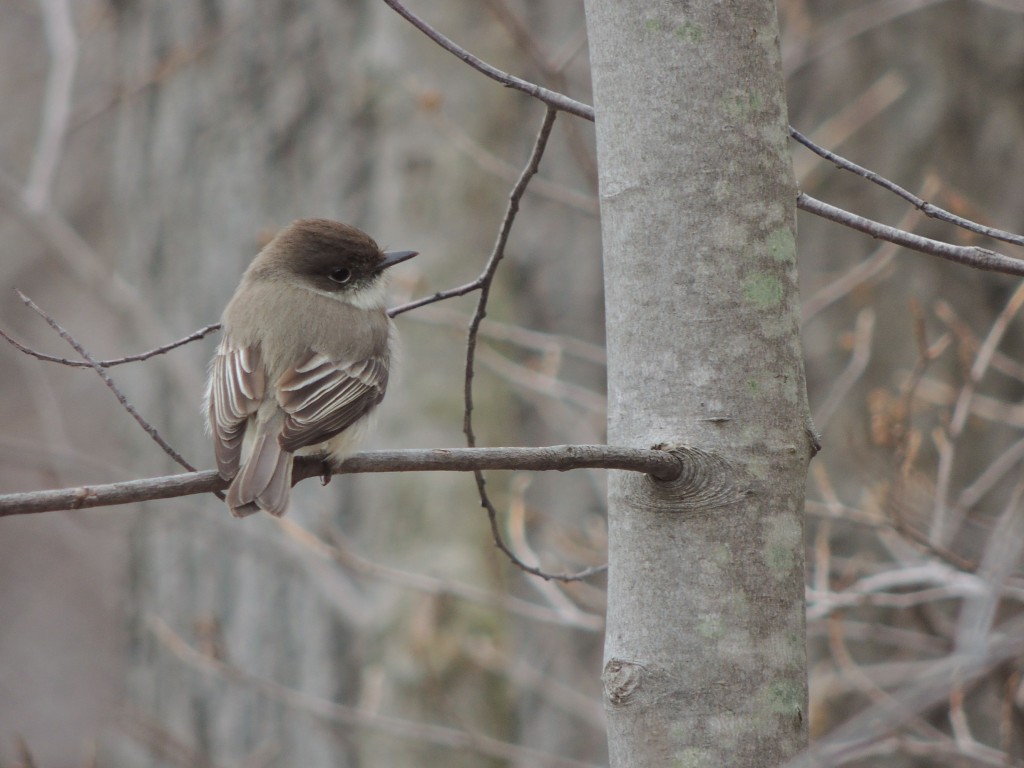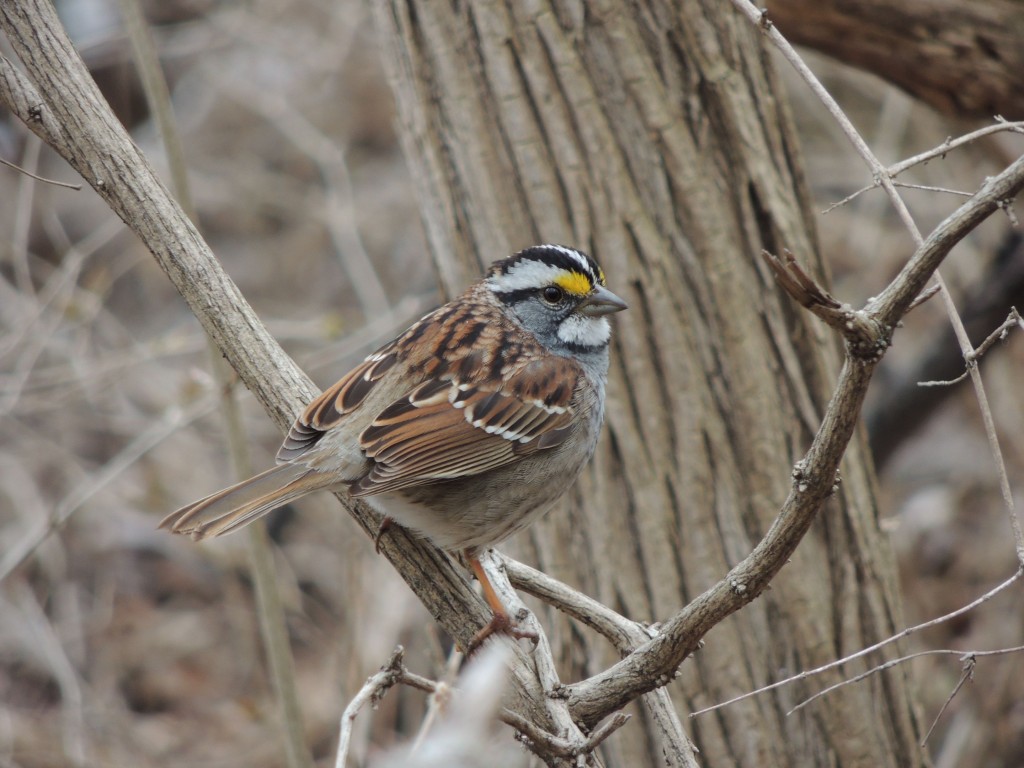April 8 2016. Cootes Paradise Hamilton ON. Our team of volunteer-birders has resumed its regime of census walks counting birds around two bird-rich mixed-habitat loops throughout April and May. We start bundled up against the last blasts of winter and finish in T-shirt weather. I well remember the first census last year, it was April first and there was plenty of old snow still lying thick on the ground. It was stimulating to be out birding and even more stimulating to find a Hoary Redpoll among a flock of Common Redpolls. When I wrote about that sighting I got into some discussion about whether or not Hoary Redpolls and Common Redpolls are one and the same species. It’s a hair-splitting task for the taxonomists and as far as I can see, still far from clear.

This year, (January and March anyway) has been much, much milder, but just as we were becoming complacent the first week of April played tricks on us, once again the month opened with snow on the ground. The surge of spring migrants has continued nevertheless and today and yesterday I walked around the same census route noting a few subtle (and possibly imagined) changes.

It was cold and raw; in a sheltered corner today we found perhaps a dozen White-throated Sparrows, a couple of lingering Dark-eyed Juncos and a handful of American Tree Sparrows; yesterday I saw none. Two Eastern Phoebes were a bit of a surprise and there were lots of ducks whiling away the cold morning, including twelve Canvasbacks and seven Ring-necked Ducks. A large raft of snoozing Ruddy Ducks had almost doubled in size to 300 and suddenly Pied Billed Grebes appeared.
Odd ducks Pied-billed Grebes. Grebes as a family are well, different, at one end of the spectrum they are outlandish, I’m thinking of the dancer-on-water, the very elegant Western Grebe. It is as spellbinding in its athleticism as its cousin the Pied-billed Grebe is clownish and lumpy. A Pied-billed Grebe proclaiming its territory ‘sings’ of one of nature’s more hair-raising calls, a prolonged wailing, clucking and howling that eventually dwindles to a finale as if the bird is drowning itself. I’ve written about them a few times because, for all of that, the Pied-billed Grebe is in its own way sort of loveable, and despite some other enjoyable and notable sightings was my Bird of the Day.